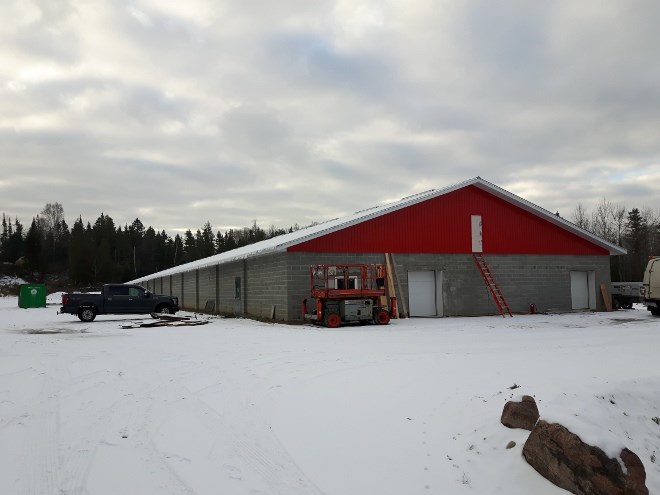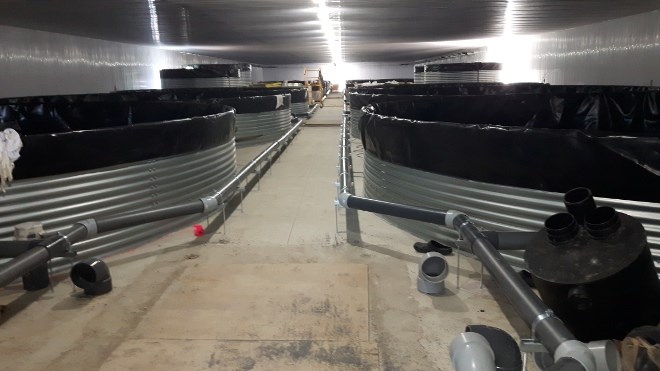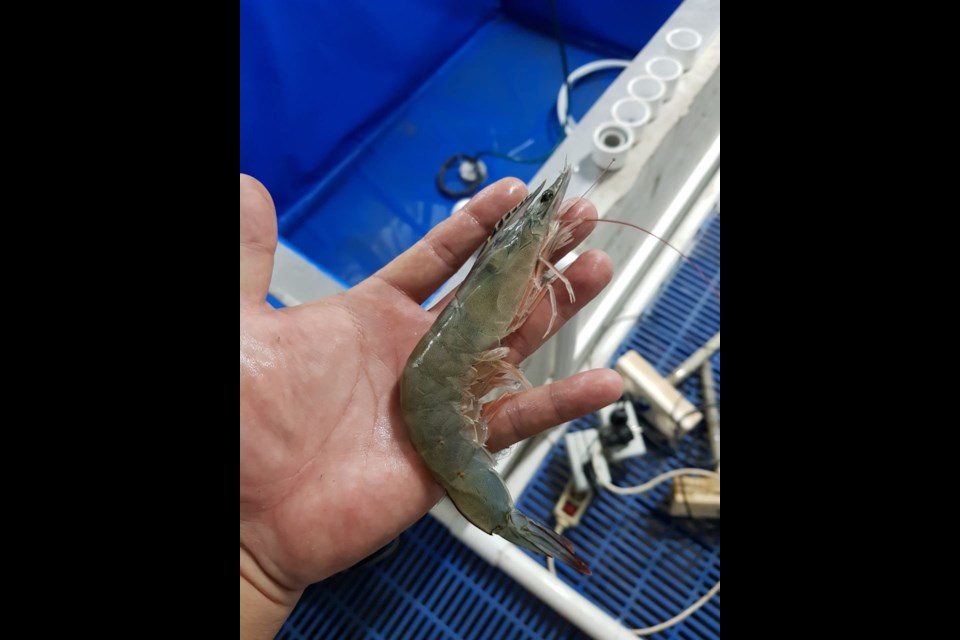There's a new player in northeastern Ontario's aquaculture industry, and they are bringing the bounty of the Pacific Ocean to the region.
If all goes well, GOOD4Ushrimp – located in Estaire, about a 30-minute drive southeast of Sudbury – will become the third Pacific white shrimp farm in Canada to provide fresh shrimp to consumers as early as this summer or early fall.
While shrimp is a common seafood product, what will make this shrimp unique, and better, according to partner Kerry LeBreton, is freshness, as well as being healthier for consumers and better for the environment.
“Most current global shrimp farming practices raise concerns about safe shrimp consumption, environmental damage and forced labour in the seafood trade," he said. "We are happy to be a part of a movement that has a focus on clean food within ecologically sustainable and ethical practices.”
The company is still putting the finishing touches on parts of the 18,000-square-foot facility. But, for the past several weeks people have been coming to the farm looking to order and purchase.
“Demand is there. I knew it was there for a long time, so we decided to start farming shrimp in this part of the country,” LeBreton said. “We are bringing health-conscious, quality shrimp to the market.”
The facility isn't open to the public at this time, and the area in the building where the shrimp will be farmed is restricted for bio-security reasons.
The farm will receive hundreds of thousands of post larvae in the coming weeks in order to fill all the tanks within the facility.
When they arrive at the farm they are roughly the size of a human eyelash.
It is now a matter of nurturing the larvae. The shrimp that will be sold will be around 22 grams.
LeBreton said he was hoping to have larvae earlier, but last November's hurricanes devastated hatcheries in Texas and Florida, where most of North America's post larvae come from.
The supply chain is often poor in the winter months, due to cooler temperatures.
Once the farm is operational, LeBreton explained people will be able to order their shrimp online and come pick it up at specified times.
“Our shrimp will be head-on, tail-on, fresh, never frozen from our farm to your table,” he said. “The quality of shrimp (currently imported by Canada) is not good. Much of the shrimp we get comes from halfway around the world and they've been frozen up to two or three times.”
Most of the world's Pacific white shrimp supply comes from Asia. As the public becomes more aware of how food is grown and manufactured, he says consumers and businesses are trying to find more sustainable and healthier sources.
LeBreton started working on the facility on the fall of 2016. The process of starting the farm, he said, was facilitated due to the already strong aquaculture industries in the North and uniqueness of the product, as well as existing demand. The challenge is creating a facility for a tropical species.
“Aquaculture in the country has been growing at an incredible rate,” he said. “Ontario is known for trout farms and other Northern fish species. It stands to reason because of the vast amount of water and lakes, it poses a pretty good opportunity. Shrimp is completely different because of our climate and/or the temperatures to support their cultivation.”
The technology in the facility is a closed recirculation system (CRS), which LeBreton said will be the future of sustainable farming. Shrimp are housed in a series of tanks, moving them to progressively larger ones as they grow. The majority of the space of the building is dedicated to the tanks and equipment needed to keep the shrimp alive and thriving. The room is temperature-controlled, keeping it at a steady 30 degrees Celsius.
The salt levels in the water are also kept at a lower level than at most farms, to produce a shrimp that is healthier for people to consume, but will be suitable for the shrimp to live.
"You can be assured that we will continually source the best possible feed for the shrimp that is available on the market," LeBreton said. “This is as close to their natural environment as we could make it. The heat and the humidity in the building make it a very nice place to be during the winter months.”
For proprietary reasons, he could not talk about the pumps and tank systems, but did say all their water is locally sourced from a well drilled specifically for the facility.
He did point out that the water was surprisingly low in iron for the region.
The facility also includes a lab, office, and will eventually include a packaging and shipping area.
So far there are only two full-time employees, but there are plans to hire more once in full operation.
LeBreton said they have had a lot of good support from local businesses, community members as well as the Northern Ontario Heritage Fund Corporation, which provided a $200,000 grant for the project. He said he is thankful the government sees the importance of projects like this for the growth of aquaculture in Ontario.



Post a Comment